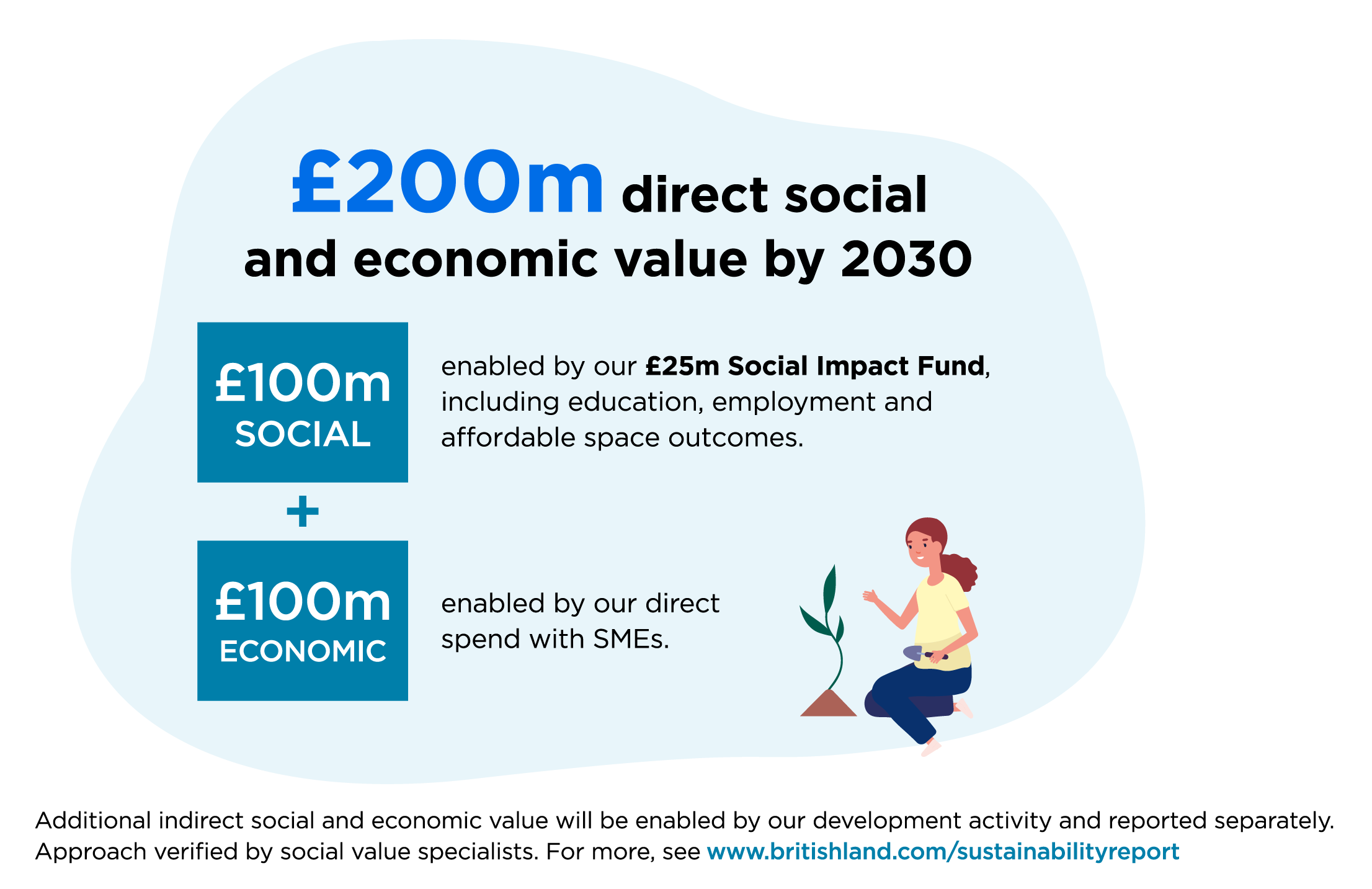More than a decade on from the launch of our first social impact commitments, we’re ramping up progress with a target to directly enable £200m of social and economic value by 2030. This target is about so much more than a number – we are using it to drive collaboration and alignment across all our focus areas by communicating in a language that’s universally understood across all our stakeholders, setting out what good looks like and partnering to make a long-lasting, positive social impact in our communities.
Importantly, our new target will drive progress. We’ll be able to leverage our investment – including money, the energy and skills of our teams, and affordable space at our places – to enable the most social impact. This includes setting and tracking more granular targets at our places, further embedding social impact in every aspect of how we do business.
It gives us a new mechanism for greater collaboration and alignment. With different organisations focusing on diverse social issues, it’s a way to pull everything together. And it opens new opportunities to connect with our environmental activity. This will be important in moving towards a just transition – ensuring a fair and inclusive journey to a net zero, resilient future where people and nature thrive.
It also supports our place-based approach – tailored around local needs and opportunities for communities at each place – giving us the ability to compare the impact of activities in communities facing very different issues, from Camden to Edinburgh.
A transparent approach
A key foundation of our approach is being transparent about what is included in the target and how we are calculating value. Social value reporting is being adopted by businesses at speed, so, in developing our target, we listened to people across our business, to local authorities, grassroots community partners and social value specialists CHY Consultancy. Each audience asked different questions and presented different challenges. As a result, we’re striving for a market leading approach to social transparency and will publish a clear methodology about what we are including.
This builds on the rigorous approach we took when we piloted social value reporting last year, implementing the Impact Evaluation Standard framework, getting our data externally verified, understanding what works for our business and looking at best practice across different sectors. It also will allow us to engage with different audiences and to tailor our approach if needed when regulation comes forward in this area.
The £200m direct social and economic value consists of:
- £100m of direct social value enabled from our £25m Social Impact Fund, focusing on education, employment and affordable space outcomes.
- £100m of direct economic value enabled from our spend with SMEs across the UK.
Our biggest debate was around including Section 106 employment outcomes and indirect economic value enabled through contractor spend with SMEs and local businesses on our developments. Local employment and procurement are required on our developments, but we go way beyond what’s mandatory – really pushing ourselves and our partners to achieve employment outcomes and working closely with local authorities and communities to understand and respond to local priorities. Listening to stakeholders, we decided that, as it’s an important part of what we do, we will separately target £100m of indirect social and economic value through our development activity. However, recognising that these outcomes are not purely driven by us, we are ring-fencing this – so it’s not part of our core target – and applying a 50% reduction in reporting the outcomes.

We’ve been moving towards this point in our strategy and have now taken a huge leap forward. I’m excited about the insights we’ll gain into the impact of projects at our places, in a better way than beneficiary numbers, which can vary hugely and don’t always reflect real social impact. A one-off event hosting hundreds of people has higher beneficiary numbers than an employment programme offering a smaller group of people meaningful, life-changing support, but the latter might create far greater social impact.
Looking forward
We expect to see a lot of movement in this area. We would welcome regulation, bringing clarity and consistency for all businesses. It’s time for a debate across our sector. And for different sectors to talk to each other. At the moment, many organisations are not being clear about what they’re including and not including. We think everyone should talk openly about this and the challenges they face. This will improve consistency, escalate what we can achieve and enable meaningful comparison.
More on our social impact strategy, Thriving Places.


